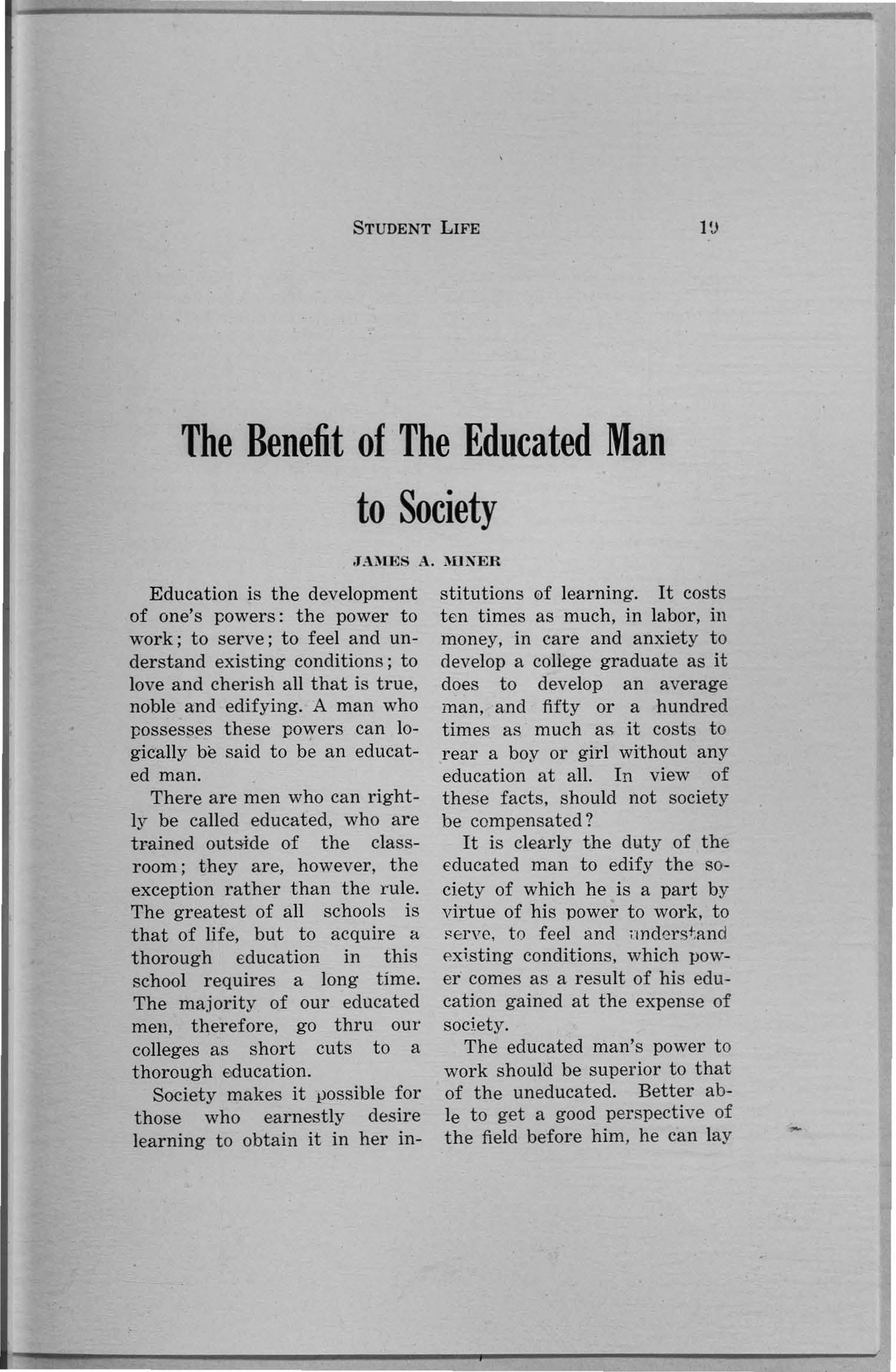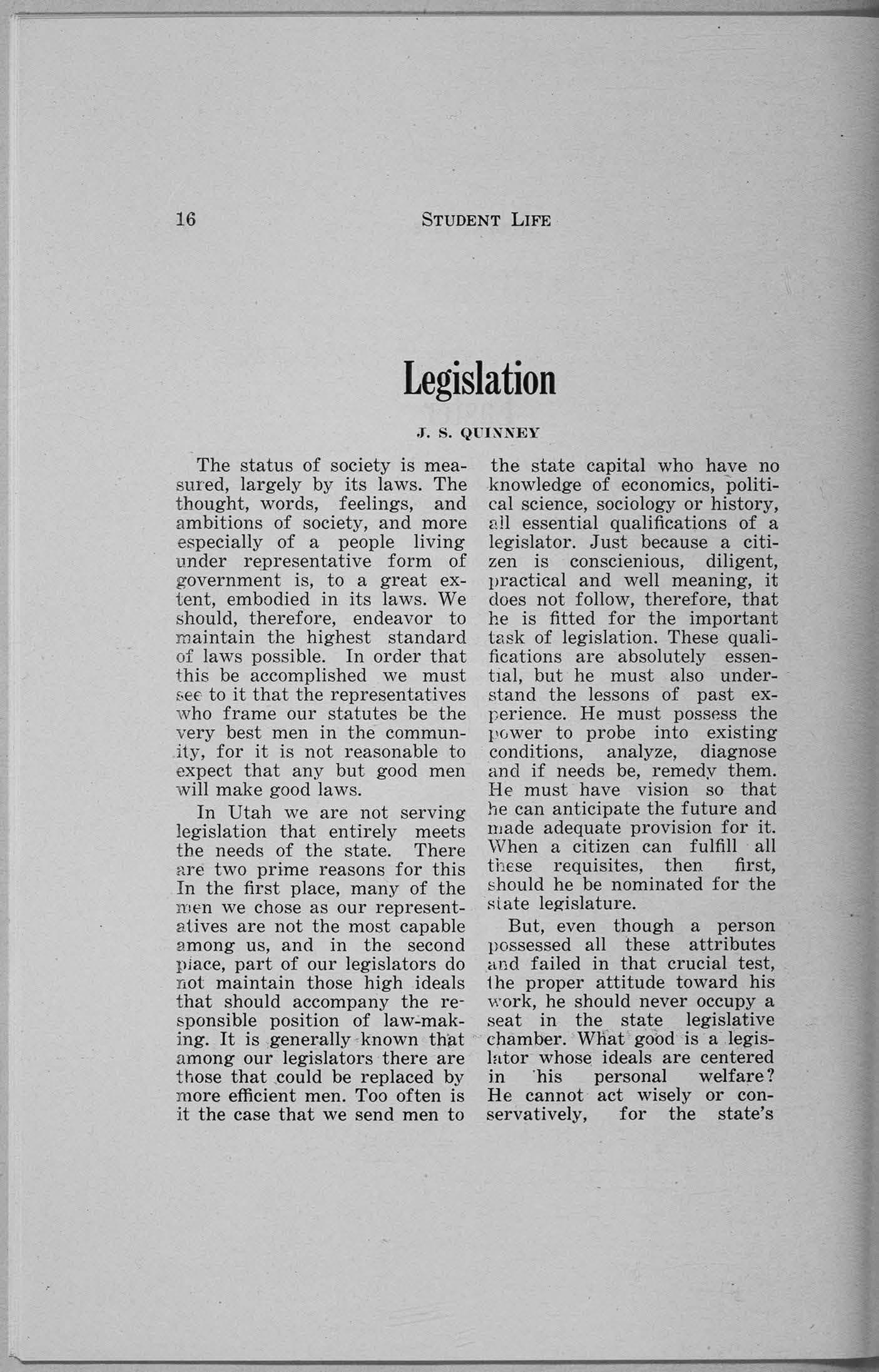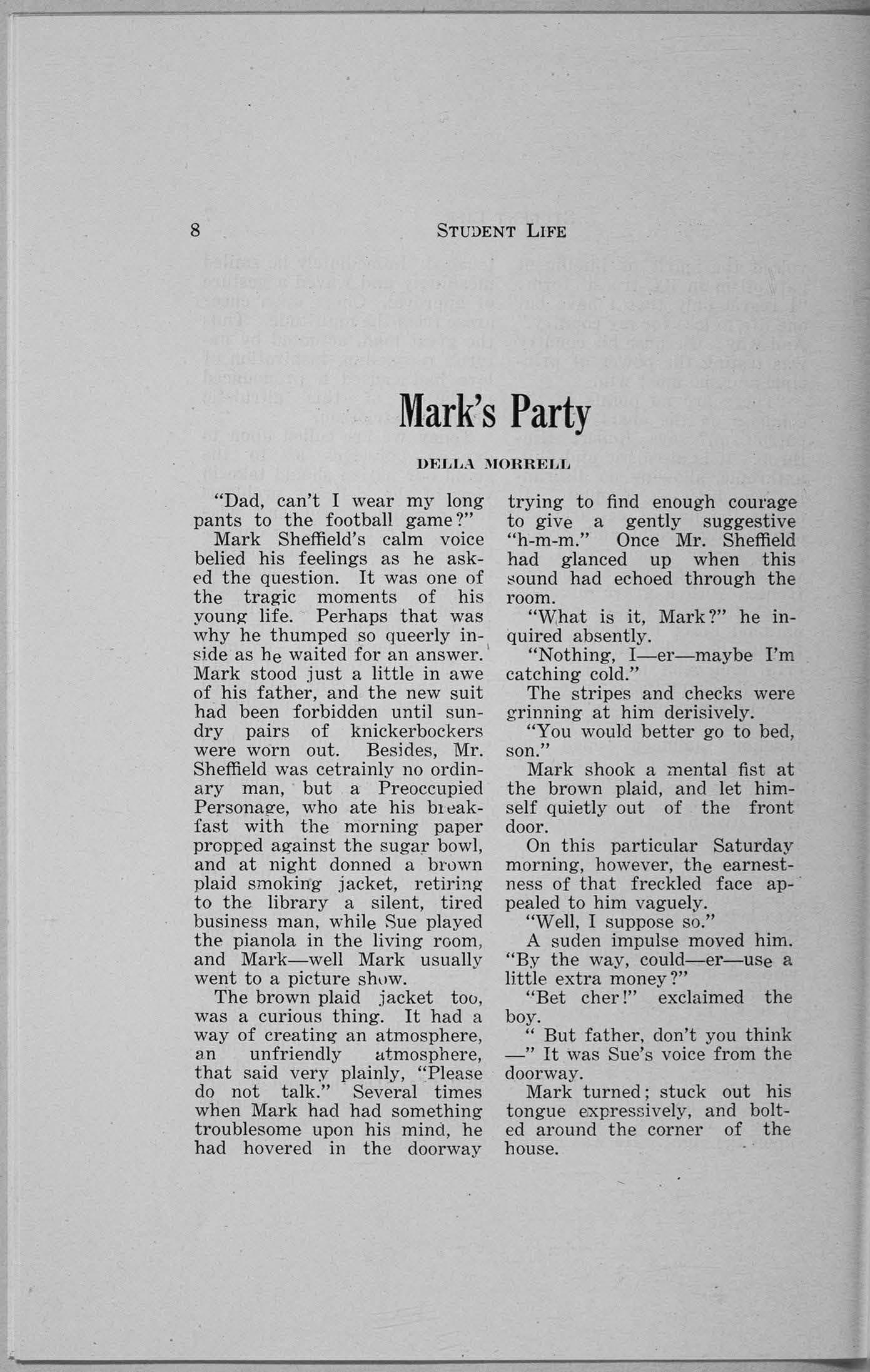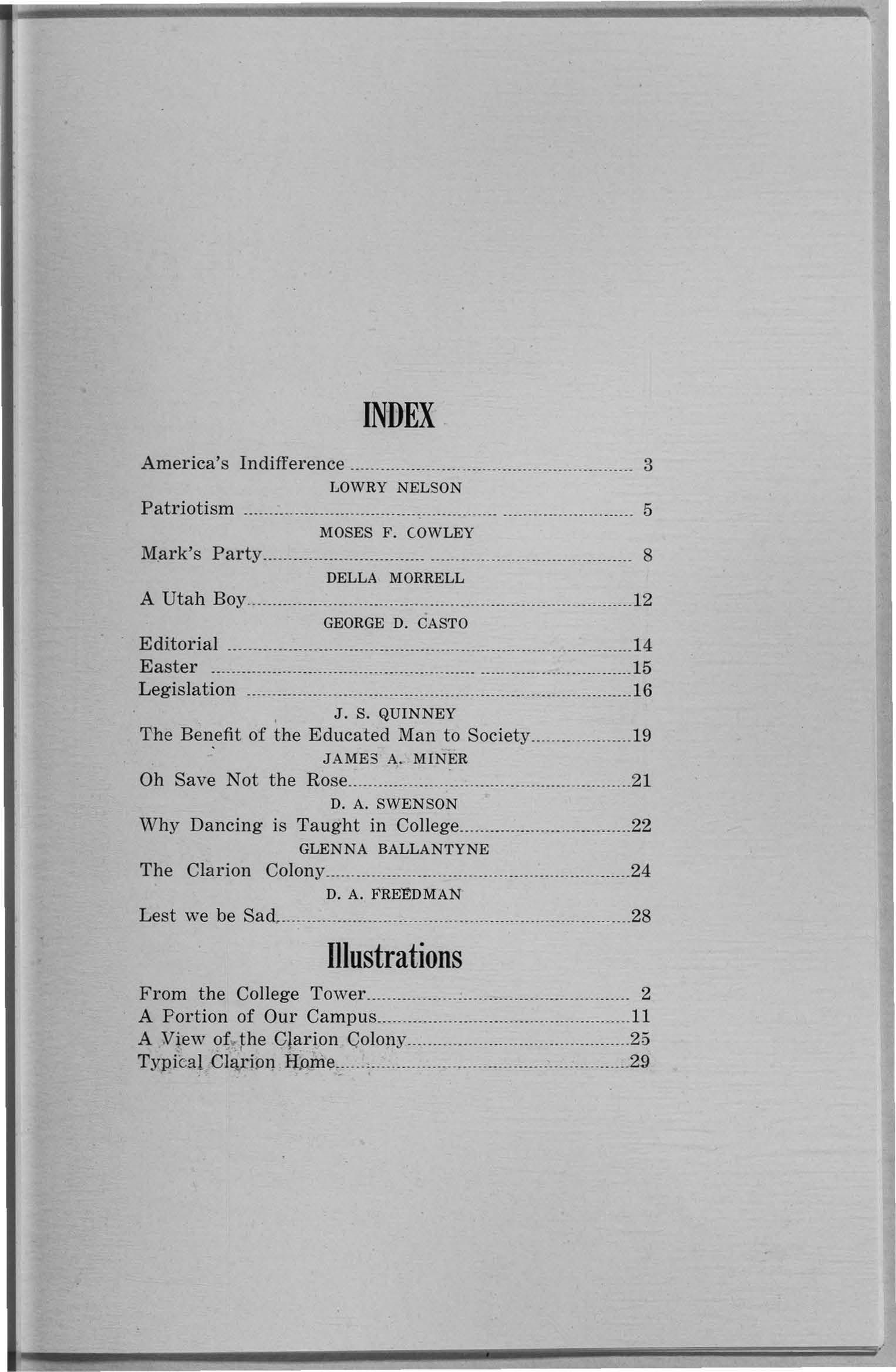
3 minute read
Why Dancing is Taught in College
22
STUDENT LIFE
GL}~N~A BALLANTYNE
Every fine art finds it place in the curriculum of the modern college. Dancing is now recognized as one of the oldest of the fine arts, but only during the last decade has it received its due recognition as such in America. Russia and France have for many years placed this art in a high position. National Ballet schools have long been established and maintained by these gover nments, and for this reason we find the Dance, through Pav lowa, Tagli.oni, in a high stage of develop- ment in Russia and France. It is only comparative ly recentl y that the dance influence has permeated America and we have at last awakened to the app reciation of the Dance and accorded to it its rig htful place among other fine arts-
Dancing like every other fine art is an expression of beauty, of emotions such as love, triumph, hate and fear. It is probab ly the oldest of arts, in fact we may safe ly say it is as Gld as history or life. Before logic, man knew emot ion, and his only way of expression was by mean s of pantomime . By mimic the pri mitive man crude -
ly displayed his joy, sorrow and triu mph. Later this was done to the rhythmical, weird music of his tribe. The dance became his religious ritual, which customs we still find among the un- _,ivilized tribes of today. Egyptian engrav ings of six thoushnd years ago show the Egyptian idea of beauty, the dancing figure . In ear ly Grecian and Roman sculptu re the graceful pose of the dancer was a favor - ite subject.
Still later we find the national spirit developed in the Folkdance. In it the peasant finds 1, means of expression. The Rus sian dance is characterized 1.Jy stre ngth, emphasis and pow- €'1' of movement. The Spanish dance is recognized by its subtle grace and intricate steps . In the French dance we see the highly specialized . feats of technique . The Irish claim the jolly jig for their own. The most patriotic form of the dance is the Scotch, probably because of inspiring the marti al music employed. In the Swedish and Hungarian folk dance we see the rea l joy of the peas- antr y expressed. The technique iR not so closely followed as
STUDENT LIFE
23
is the rythm and the result is the spontaneous expression of carefu l joy. The more conserv- ative English nation prefers 1 he more stately dance, such as the Roger De Cover ly. Lastly comes the Oriental dance with which we are not so familiar. It is only very recently that the outside world has been able to enjoy the rich, wonderful, charm of the Harem dancing on account of the sacredness with which the peop le of the Orient hold this art. Here it is that W(' find the pantomime dance at its highest development. The beautiful dancer of the Harem uses it daily in her dancing for the entertainment of her mas- ter and his friends. Thus we find the dance in many forms, expressive of various emotions.
Naturally dancing comes un- der the department of Physical Education because in the first place, it is of considerable va lue as a · physical exercise,
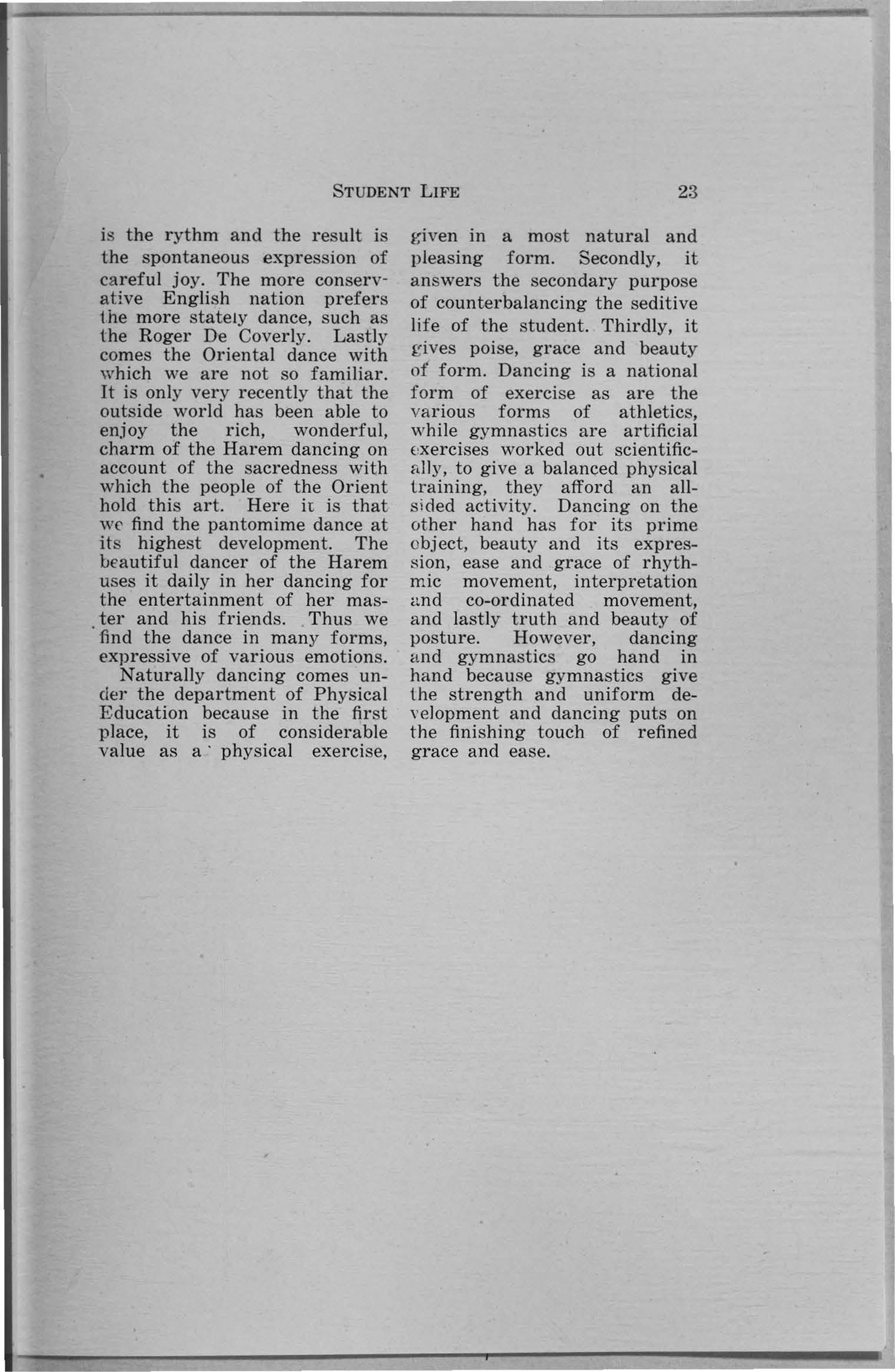
given in a most natural and pleasing form. Secondly, it answers the secondary purpose of counterba lanc ing the seditive life of the student. Thirdly, it ~ives poise, grace and beauty of form. Dancing is a national form of exerci se as are the various forms of athletics, whi le gymnastics are artificial (:xerc ises worked out scientifically, to give a balanced physical training, they afford an allsided activity . Dancing on the other hand has for its prime object, beauty and its expres- sion, ease and grace of rhythmic movement, interpretation and co-ordinated movement, and last ly truth and beauty of posture. However, dancing and gymnastics go hand in hand because gymnastics give the strength and uniform de- \'elopment and dancing puts on the finishing touch of refined grace and ease.

